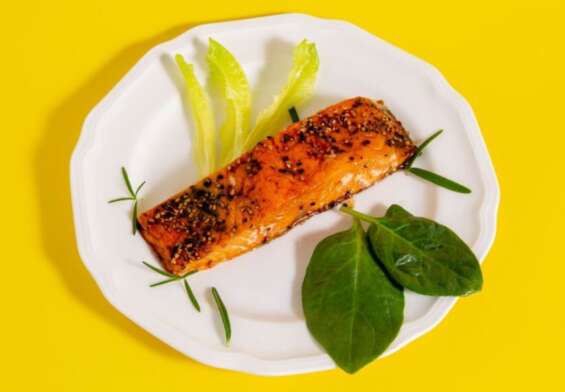
Clean Eating Diet: How to Eat Clean and Improve Your Health
Clean eating diet is an eating plan that focuses on whole, unprocessed foods. It emphasizes eating fresh, natural foods that are as close to their natural state as possible. The goal is to get the most nutrition, flavor, and satisfaction out of each meal. This type of diet eliminates refined and processed foods, refined sugars, and unhealthy fats. It eliminates all food additives, preservatives, and colorings. Instead, clean eating focuses on eating natural, whole foods such as fruits, vegetables, lean proteins, whole grains, legumes, nuts, and healthy fats. This diet emphasizes eating a variety of natural, nutrient-rich foods and avoiding processed and refined foods. Clean eating is not a diet, but a lifestyle choice that focuses on eating natural and nutritious foods. It is an excellent way to improve overall health and well-being.
What is Clean Eating and How Can it Improve Your Health?
You’ve heard the phrase “you are what you eat”, but what if you changed it to “you are what you don’t eat”? Enter clean eating. It’s not a diet, but a way of life. It’s about eating food as close to its natural state as possible and limiting processed foods. Clean eating is about eating for health and wellness, not about cutting calories or carbs.
So, what does clean eating look like? Basically, you’re focusing on whole foods like fruits, vegetables, lean proteins, whole grains, and healthy fats. Avoid processed foods that are high in sugar, sodium, and unhealthy fats. It’s also important to limit your intakes of refined sugars, like added sugars in sodas, cakes, cookies, and candy.
So how can clean eating improve your health? Well, eating clean can help you maintain a healthy weight. It can also reduce your risk of chronic diseases such as heart disease, diabetes, and cancer. Clean eating can also help you get more vitamins and minerals, which can boost your energy levels and improve your overall mood.
Clean eating isn’t a “quick fix” and it takes commitment to stick to it. But with a little planning and preparation, it can become a lifestyle that you enjoy. Start with small steps like eating more fruits and vegetables and cutting back on processed foods. You’ll soon start to see the benefits, and you’ll be looking and feeling your best in no time. So don’t be afraid to give clean eating a try – your body will thank you!
The Benefits of Eating Clean: What to Expect When You Start
Are you ready to take the plunge into eating clean? You’re in for a treat! Eating clean is a great way to stay healthy, lose weight, and feel energized. But what can you expect when you make the switch? Here are some of the benefits you can look forward to when you start eating clean.
- Goodbye, Junk Food: Eating clean means that you’ll be avoiding processed and refined foods like chips, donuts, and candy. Goodbye, quick and easy snacks! But don’t worry, you’ll be able to make up for it with more nutritious snacks like nuts, fruits, and veggies.
- Hello, Healthy Habits: Eating clean requires a bit more effort than your typical drive-thru meal. You’ll be thinking more about what you’re putting in your body and how it will benefit you. You may even find yourself taking the time to cook healthier meals from scratch.
- More Energy: Eating clean can give you the energy you need to live life to the fullest. You’ll be avoiding all the sugary and processed foods that can cause fatigue and instead be munching on natural foods packed with vitamins and minerals.
- Lose Weight: Eating clean can help you lose weight, but don’t expect it to happen overnight. You’ll still need to get regular exercise and make sure you’re eating the right foods in the right amounts.
- Feel Good: Eating clean can have a positive impact on your mental and emotional well-being. You’ll be avoiding unhealthy, processed foods that can leave you feeling sluggish and depressed. Eating healthy foods can help boost your mood and give you a sense of accomplishment.
So, there you have it! Eating clean can be a great way to stay healthy and feel energized. With a little effort, you can start seeing the benefits in no time.
10 Clean Eating Recipes That Will Make You Feel Great
- The Grilled Avocado: Grill up some avocados and enjoy them with a simple squeeze of lemon juice and a pinch of sea salt. This is a great way to get healthy fats, vitamins, minerals, and fiber.
- Sweet Potato Hash Browns: Instead of regular hash browns, make a healthier version with sweet potatoes. Simply shred the sweet potatoes, cook with some olive oil, and add some onion, garlic, and your favorite herbs and spices.
- Baked Apples: This is an easy and delicious snack or dessert. Core and slice your favorite apples, sprinkle them with cinnamon, and bake them in the oven. Enjoy with a dollop of Greek yogurt or almond butter.
- Raw Veggie Platter: Cut up your favorite vegetables (think carrots, celery, bell peppers, cucumbers, etc.) and enjoy with a creamy hummus or tahini dip.
- Quinoa Bowl: Cook up some quinoa, add some cooked veggies like roasted brussels sprouts or sautéed kale, top with avocado and a sprinkle of sea salt, and enjoy.
- Veggie Stir Fry: Stir fry your favorite vegetables with some garlic and ginger, add a splash of soy sauce or tamari, and serve with brown rice.
- Greek Salad: Toss together some greens, tomatoes, cucumbers, feta cheese, olives, and a drizzle of olive oil and balsamic vinegar for a quick and delicious salad.
- Baked Sweet Potato Fries: Slice sweet potatoes into fries, coat with a little olive oil and your favorite seasonings, and bake until crispy.
- Overnight Oats: This breakfast is great for busy mornings. Simply mix some oats, milk, your favorite fruits, and nuts, and let it sit overnight. In the morning, top with some honey or maple syrup and enjoy.
- Lentil Soup: Cook some lentils in vegetable broth with your favorite vegetables and spices. Ladle into bowls and serve with a sprinkle of Parmesan cheese.
How to Shop for Clean Eating On A Budget
Shopping for clean eating on a budget doesn’t have to be a chore. In fact, it can be an enjoyable experience if you approach it with the right attitude. Here are some tips to help you out:
Know Your Goals: Before you start shopping for clean eating on a budget, take some time to think about what you want to achieve. Figure out what type of food you want to eat and how much money you are willing to spend on it.
Make a List: Once you have your goals in mind, make a list of the items you need to buy. This will help you stay focused on what you need and prevent you from getting distracted by tempting but unnecessary treats.
Shop Smart: When you’re at the store, try to stick to the perimeter of the store first. This is where most of the fresh produce, lean meats, and whole grains are located. Then, if you have time, you can check out the center aisles.
Use Coupons: Coupons can be a great way to get deals on clean eating items. Check the weekly circulars for coupons, and even look online for printable coupons.
Look for Sales: Many stores offer discounts on certain items that can be used for clean eating. Look for buy-one-get-one-free deals or discounts on organic and natural foods.
Try Frozen Foods: Frozen fruits, vegetables, and lean meats are often more affordable than their fresh counterparts. Plus, they are just as nutritious.
Stock Up: When you find a great deal on a healthy item, buy a few extra for later. Bulk buying can save you money in the long run.
With these tips in mind, you’ll be able to shop for clean eating on a budget and still enjoy the foods you love. Bon Appétit!
Understanding the Difference Between Clean Eating and Other Diets
Clean eating is not just a diet – it’s a way of life! For those of you who don’t know, clean eating is a style of eating where you focus on eating whole, unprocessed foods and avoiding processed foods, sugar, and unhealthy fats. But it’s easy to confuse clean eating with other diets, so let’s take a closer look at the difference.
First, let’s look at the Paleo diet. This diet focuses on eating like our Paleolithic ancestors, so mostly meat, eggs, veggies, fruits, and nuts. The main difference between Paleo and clean eating is that the Paleo diet is more restrictive – you have to avoid dairy, legumes, and grains.
Next, let’s compare clean eating to a vegan diet. While both are plant-based diets, veganism takes it one step further by avoiding all animal products, including meat, dairy, eggs, and honey. With clean eating, you don’t have to avoid all animal products, but you do need to make sure they’re ethically sourced and free of antibiotics and hormones.
Finally, let’s consider the ketogenic diet. This is a high-fat, low-carb diet that’s designed to put your body into a state of ketosis. Clean eating doesn’t require you to cut out carbs, but it does encourage you to focus on healthy sources of fat like nuts, seeds, and avocados.
Now that you know the differences between these diets, you can make an informed decision about which one is right for you. So, if you’re looking for a balanced way to eat that focuses on whole foods, clean eating might be your best bet!
An Overview of the Different Types of Clean Eating Diets
Are you looking for an easy way to get healthier and look your best? If so, you may be thinking about “clean eating” diets. But what exactly is clean eating? Well, the simplest way to explain it is that it’s a way to eat that emphasizes whole, unprocessed foods. Basically, it’s about avoiding processed and refined foods and sticking to natural whole foods. Eating clean can help you lose weight, improve your overall health, and better your mental well-being.
So, what are the different types of clean eating diets out there? Let’s take a look!
First, there’s the Plant-Based Diet. This diet focuses on fruits, vegetables, legumes, nuts, and whole grains. You’ll get plenty of fiber and health-promoting plant compounds. It’s a great way to reduce your consumption of animal products and processed foods.
Next, there’s the Mediterranean Diet. This diet focuses on fresh fruits and vegetables, whole grains, legumes, nuts, and seeds. It also emphasizes extra virgin olive oil, lean proteins, and moderate amounts of dairy and fish. This diet is also linked to a reduced risk of chronic diseases such as heart disease and type 2 diabetes.
Then there’s the Flexitarian Diet. This diet is all about eating mostly plant-based foods with occasional servings of animal products. Think of it as a “flexible vegetarian” diet. It’s a great way to reduce your consumption of animal products while still enjoying some of your favorite meat dishes.
Finally, there’s the Paleo Diet. This diet follows the eating habits of our hunter-gatherer ancestors. It focuses on whole, unprocessed foods such as lean meats, fish, nuts, seeds, and vegetables. It’s an excellent way to reduce your intake of processed foods and refined sugars.
So, there you have it! These are just a few of the different types of clean-eating diets out there. No matter which one you choose, you’ll be sure to feel healthier, look better, and enjoy the deliciousness of whole, unprocessed food. Bon appetite!
How to Cut Processed Foods Out of Your Diet and Eat Clean
Are you ready to put processed foods in the rearview mirror and start eating clean? Well, here’s your guide to help you get started!
- Take a look at your pantry. Go through the shelves and throw out anything that has a long list of ingredients or is loaded with added sugars, trans fats, and other suspicious ingredients. You’re aiming for simplicity and whole foods.
- Get familiar with the “clean” alternatives. Swap out your processed snacks for nuts, seeds, popcorn, and fruit. Instead of processed breakfast cereals, try oatmeal, eggs, or yogurt with fresh fruit.
- Read labels. While you’re shopping, check the labels for added sugars, trans fats, and heavily-processed ingredients. If you don’t recognize the ingredient or can’t pronounce it, it’s probably not a great choice.
- Plan ahead. Eating clean doesn’t have to be hard, but it does require a bit of planning. Cook in bulk and freeze extra servings to make sure you’ve always got something healthy on hand.
- Don’t stress out. Eating clean isn’t an all-or-nothing proposition. It’s ok to have the occasional treat. Just remember that moderation is key.
Eating clean doesn’t have to be a drag. With a bit of effort, you can make the switch to a healthier way of eating – and you’ll feel better about it!
The Pros and Cons of Eating a Clean Diet
Pros of Eating a Clean Diet
- You can actually taste your food! By eating a clean diet, you can enjoy the fresh flavors of your food, instead of all the added preservatives and artificial flavors.
- You will save money. Eating a clean diet typically means buying more fresh, whole food items and less processed and packaged foods—which are usually more expensive.
- You will be healthier overall. Eating a clean diet typically means eating more nutritious foods, like fruits and vegetables, lean meats, and whole grains, which can have positive impacts on your overall health.
Cons of Eating a Clean Diet
- It can be difficult to find clean food items. Not all grocery stores carry a wide variety of fresh, whole foods, and it can be difficult to find the items you need.
- Cooking a clean diet requires more time and effort. Whole foods often require more preparation and cooking time than processed foods, so if you are short on time, cooking a clean diet can be a challenge.
- It can be hard to stick to a clean diet. Eating a clean diet often means avoiding foods that may be tempting, like fast food, or processed snack foods. It can be hard to stay motivated when you know that a few bites of something bad could ruin your progress.
Clean Eating: A Comprehensive Guide to Eating Healthy
Are you looking to make the switch to a healthier lifestyle? Have you heard of clean eating and want to learn more? Then look no further, because this comprehensive guide will tell you all you need to know about eating healthy!
First, let’s talk about what clean eating is. It’s about consuming whole, natural foods that are minimally processed and free from added sugars, trans fats, and artificial ingredients. When you’re eating clean, you’re eating food that’s close to its natural state. This means plenty of fruits and vegetables, lean proteins, and whole grains. You’ll also be avoiding processed and packaged foods, which are often high in sodium and unhealthy fats.
Now, let’s talk about how to start eating clean. To get started, you should focus on building a well-rounded grocery list. This means having a variety of fruits and vegetables, lean proteins, healthy fats, and whole grains. Aim to consume mostly whole, unprocessed foods and limit your intake of packaged and processed foods.
Next, let’s talk about how to make sure you’re getting enough nutrients while eating clean. Since clean eating is all about eating whole, natural foods, you’ll be getting plenty of vitamins and minerals. To make sure you’re getting a balanced diet, focus on getting a variety of colors, flavors, and textures in your meals. This will help ensure that you’re getting a variety of nutrients.
Finally, let’s talk about how to make clean eating fun and enjoyable. Eating healthy doesn’t have to be boring or tasteless! With a little creativity and culinary skill, you can make clean eating delicious. Try experimenting with different recipes and flavors, and don’t be afraid to get creative. You can make clean eating fun and delicious!
So, there you have it! This comprehensive guide has given you all you need to know about eating clean. Now that you know what clean eating is and how to get started, you can start living a healthier lifestyle today!
Foods to Avoid When Eating Clean: What to Look Out For
Eating clean can feel like a challenge sometimes. Sure, you know the basics of what to look for on the labels of the food you’re buying. But are you familiar with all the sneaky pitfalls that can derail your clean eating journey?
Here’s a list of some of the more sneaky culprits of unhealthy eating, and what to look out for when trying to eat clean.
- Artificial Sweeteners. Artificial sweeteners may seem like a no-brainer when it comes to eating clean, but you’d be surprised how often they sneak into the food you buy. They can be found in everything from sodas to desserts and even bread. So, be sure to always read the ingredient list and watch out for any artificial sweeteners, like aspartame or saccharin.
- Processed Foods. Processed foods are another major area to watch out for when trying to eat clean. These foods often contain a long list of unhealthy ingredients, such as preservatives, artificial flavors, and added sugars. So, whenever possible, try to avoid processed foods and opt for fresh, whole foods instead.
- Refined Grains. Refined grains, such as white bread, white rice, and white pasta, are often the go-to staples of a clean eating diet. But they should be avoided at all costs. Refined grains have been stripped of their nutritional value and can spike your blood sugar levels. So, always opt for whole grains instead.
- Fried Foods. Fried foods are another major no-no when it comes to eating clean. Fried foods are often loaded with extra calories and saturated fat that can wreak havoc on your health. So, if you’re looking for a healthier option, try baking, broiling, or grilling your food instead.
- Sugar-Free Products. While sugar-free products may seem like a good option for those trying to cut down on sugar, they can still be unhealthy. Many sugar-free products contain artificial sweeteners and other unhealthy ingredients. So, be sure to read the labels and look for healthier alternatives.
So, there you have it! Eating clean doesn’t have to be hard. Just keep an eye out for these sneaky culprits, and you’ll be well on your way to a healthier diet.
Conclusion
The Clean Eating Diet is a great way to improve your overall health and well-being. It promotes a lifestyle that is focused on whole, unprocessed foods, healthy fat sources, and plenty of exercises. Eating clean can help you lose weight, improve your energy levels, and reduce inflammation and other health issues. Ultimately, the Clean Eating Diet can help you live a healthier, more balanced life.











